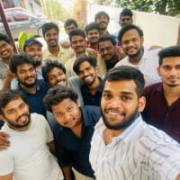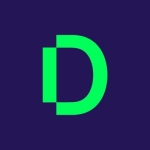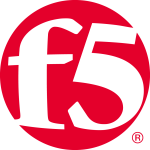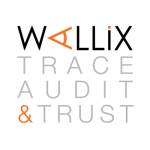What is our primary use case?
Our company has been growing, and we have many audits as well as SOX compliance requirements. We have different SOX requirements, and we wanted to ensure that every activity is monitored. That was the main reason for deploying this solution into the environment.
We are using it like a VPN access for our external users, such as vendors, to allow them to access the resources within the organization. Instead of providing them the regular VPN access, we give them access to the privileged access solution so that we can monitor what they are doing, and we are able to view back the recordings of all the activities they've done.
We have not integrated Privileged Remote Access (PRA) with other solutions at the moment. We also have another solution of BeyondTrust. We have integrated that solution with other solutions, but we haven’t integrated PRA with other solutions. We just use it for remote access and credential injection.
How has it helped my organization?
It has put us at the forefront when it comes to security, auditing, and meeting SOX requirements. It is a top-notch solution for us in these aspects. Security is the key to fulfilling SOX requirements. Ever since we deployed it, we are able to provide external auditors, who audit the company, with recordings of who is in the environment. We are able to see what is happening. We are able to provide access durations and show who is accessing what and who has been given permission to access. It has really helped us in those aspects.
The fact that PRA does not require a VPN goes a long way for us because instead of our external users installing different VPN applications and having different user names and passwords for different applications, they can just make use of it via the web. They don't need to install an application, which is a very cool and nice feature for us.
In terms of security provided by PRA when it comes to access for remote and privileged users, the users get to access only what they are permitted to access. They can't go beyond what they're allowed to access. You don't have to give anybody the credentials to privilege accounts. The solution allows you to do account injection while you are using the solution, which is really good for us. So, you can do credential injection while accessing the solution, which is a top-notch security feature for us where you get to manage privileged credentials within the organization.
It is available in multiple formats. It is available as a physical and virtual appliance, or as SaaS. When we did the PoC, it was before COVID. We did the on-prem deployment for the PoC, but immediately after the PoC, COVID came, and we started to think of what will happen when we are not physically present. So, we had to go for the cloud solution, which is quite cool as well. It takes the burden away from IT admins, and we don't have to think of how many servers we have to manage.
It is important that through the use of PRA, there is no need to share passwords with users. We are able to do credential injection where you don't get to give users privileged user accounts. With the solution, we're able to do the privilege injection, which makes it perfect for us. Nobody gets to hold onto the privileged accounts. With the solution, we are able to inject it, which is good for us.
We are mainly using it to give access to third-party vendors. In order to ensure that we monitor the activities of what they're doing, we use PRA for their access. All our external users come in through PRA. For every internal user, we use the regular VPN. We are also looking into the cost of getting more PRA licenses if we are going to put every other user in the company on it.
We have integrated it with our Active Directory, which allows us to apply our Active Directory password policies. We don't need to create any other user account for whoever is coming in. We just get to create a user in Active Directory, and password policies are already applied. So, users come in by using the Active Directory credentials, which is another level of security as well.
What is most valuable?
One of the features that I really like about it is the ability to set a start date, time, and end date for the access. For example, you can set the access for a person from tomorrow, Monday, or Tuesday and ending on a specific period of the day or a specific date. That's really quite helpful.
You can use the solution to access not just the Windows environment; you can also access your Linux devices and even your network devices. That's a very cool feature for us.
What needs improvement?
At the moment, I don't see any major problems with it. If anything, they can just change the look and feel of the login screen because it looks too simple to me. It does not have so much information. When you get to the login screen of the solution, you should have more information. We also have BeyondTrust Remote Support, and the login page looks similar to BeyondTrust Privilege Remote Access. I would love to see more rich information on the login screen or landing page so that rather than having a regular sign-in screen or page where you just provide a username and password and get into the solution, you should have more insight into what the solution does. I've mentioned this to them every time I have had an opportunity.
For how long have I used the solution?
It was deployed last year.
What do I think about the stability of the solution?
Its stability is good. It is top-notch. They are doing well because I can see the way they do release updates for the solution. They are also at the top in terms of security updates, vulnerability assessments, and other things that are currently happening. They are doing well in terms of updates, which are also helpful in stabilizing the solution. With regular updates, you get a stable solution and also more improvements and features.
What do I think about the scalability of the solution?
We are using cloud deployment. When you have a cloud SaaS solution as compared to having it in your own cloud environment or on-prem, you do not get to have much say on scalability. If you have deployed it within your environment, you get to see how to scale it up or scale it down, but when it is a cloud solution, you don't get to see what happens on the provider side. However, you get to know that at least you have been provided what you have paid for, and it is working perfectly. So, for me, scalability comes into the picture if I am managing the infrastructure within my environment, but that doesn't mean you can't talk to your provider to tell them that you want to include other things in the solution.
How are customer service and support?
Their technical support is good. At any point in time, when I needed support, they responded quickly. There was a time when the local vendor reached out to us that there is a new upgrade, but on logging onto the platform, we couldn't see the update available. We reached out to their support, and the support personnel who picked up the case told us to give him just five minutes, and he will ensure that the update is available. Their technical support is beyond cool. I would rate them a nine out of ten.
How would you rate customer service and support?
Which solution did I use previously and why did I switch?
We didn't use any similar solution previously.
How was the initial setup?
We went for the SaaS solution. They provided the platform and the access to the UI to the local vendor, who is a product partner.
What about the implementation team?
Three people were involved in its deployment. One engineer from the local vendor worked with two people from my end. One of them was from the server side, and the other one was from the networking side.
Which other solutions did I evaluate?
We didn't evaluate any other solution. We were already using BeyondTrust Remote Support to support our client's computers. It was deployed during the COVID period. Initially, it was implemented because management was thinking about how IT would manage the situation when working from home. The users had no credentials. With remote support, we were able to do that perfectly, which also gave us assurance that BeyondTrust PRA would work well for us, and we won't have any issues with it. So, the management was able to sell PRA to the top management. There wasn’t much discussion about it because of the previous experience that we had with BeyondTrust Remote Support. It has already paved the way for PRA to come into the environment.
What other advice do I have?
I would tell others to just go for it. If they are security conscious and are concerned about security within their environment, then just go for it.
I would rate this solution a nine out of ten.
Disclosure: PeerSpot contacted the reviewer to collect the review and to validate authenticity. The reviewer was referred by the vendor, but the review is not subject to editing or approval by the vendor.

















